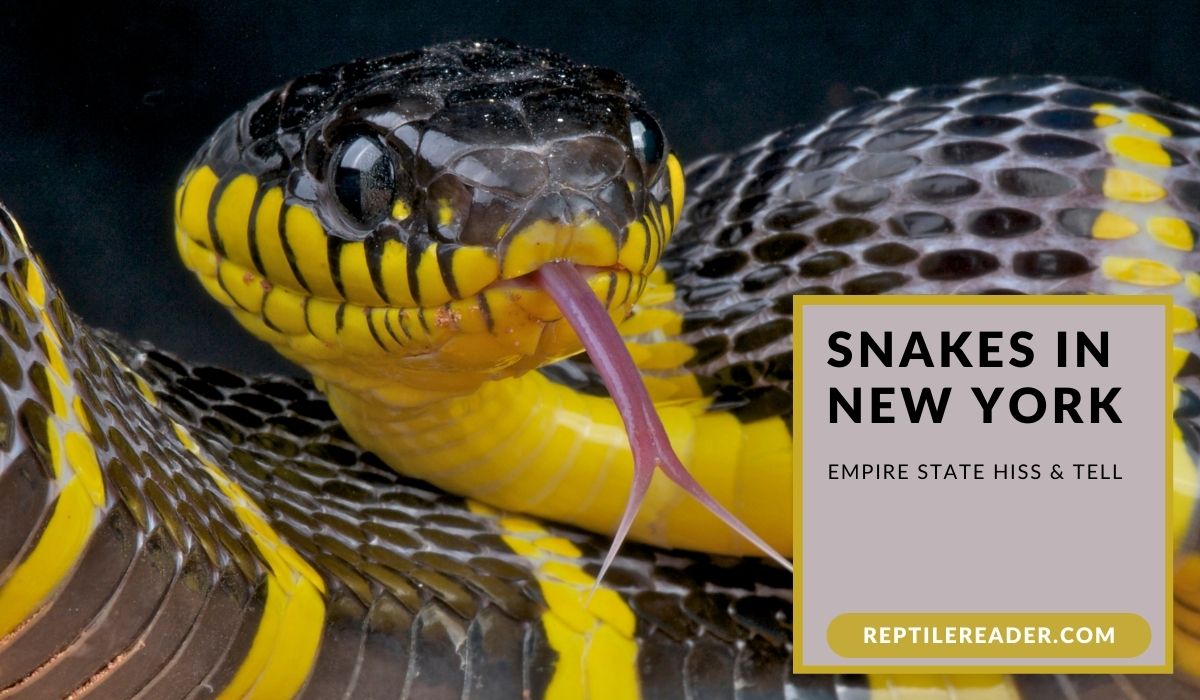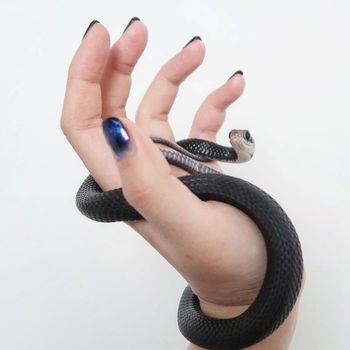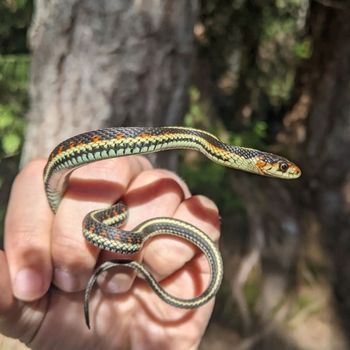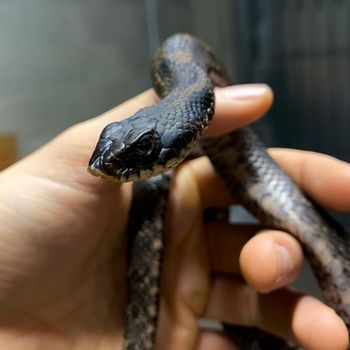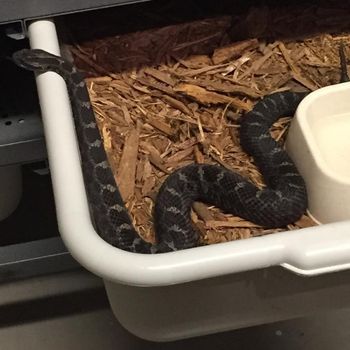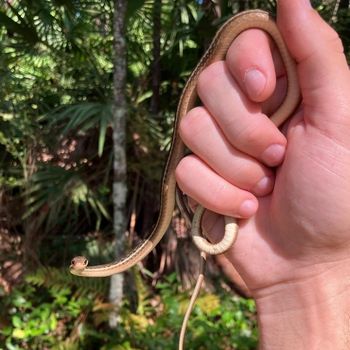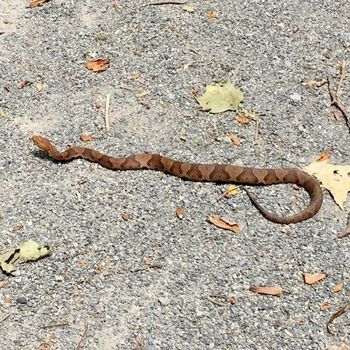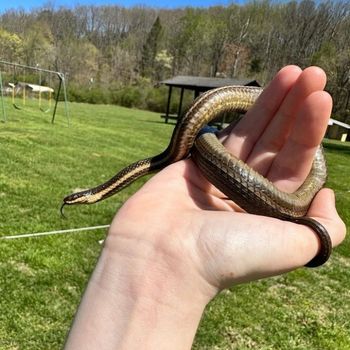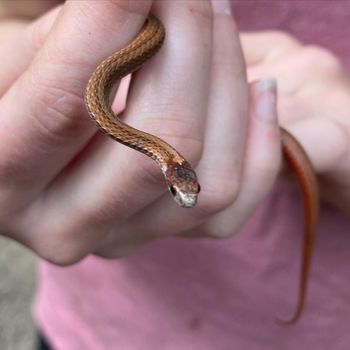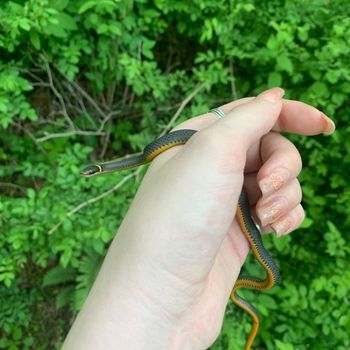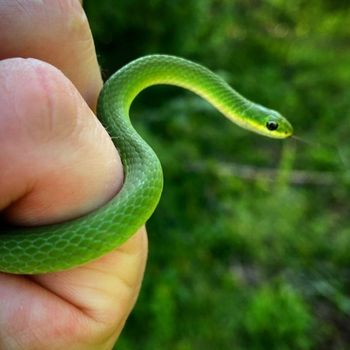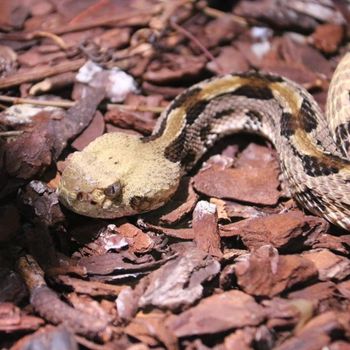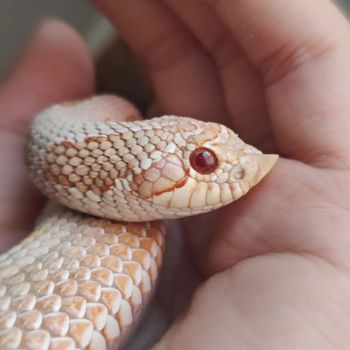Snakes in New York: Empire State Hiss & Tell
Are you curious about the slithering inhabitants of New York State? You might be surprised to learn that there are actually 17 different species of snakes that can be found here!
From the urban jungle of New York City to the picturesque landscape of upstate, these fascinating creatures can be discovered in a variety of habitats.
In this blog post, we’ll be introducing you to these amazing reptiles, sharing facts about their preferred environments, and taking a closer look at their unique characteristics!
| # | Name | Details | Image |
| 1 | Black Racer (Coluber constrictor constrictor) |
| 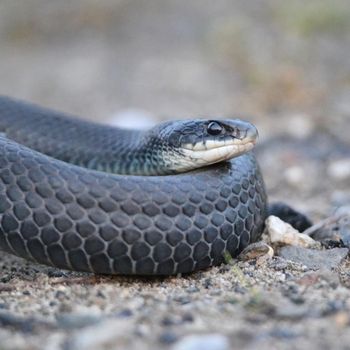 |
| 2 | Black Rat Snake (Pantherophis obsoletus) |
| 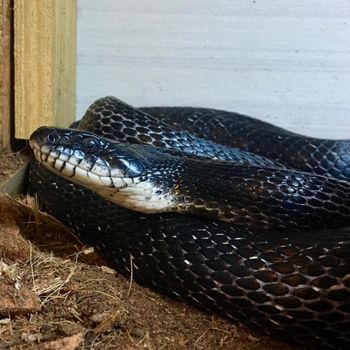 |
| 3 | Common Garter Snake (Thamnophis sirtalis) |
| 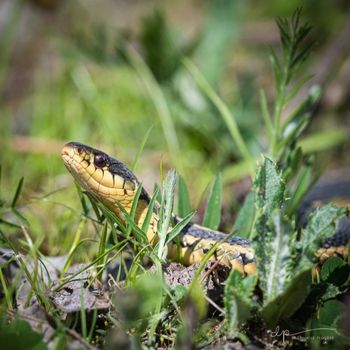 |
| 4 | Dekay’s Brownsnake (Storeria dekayi) |
| 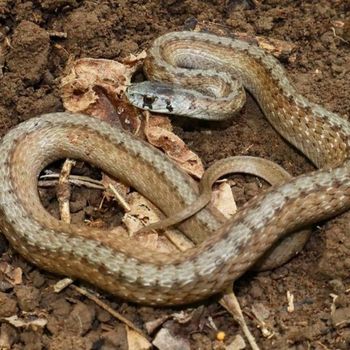 |
| 5 | Eastern Hog-nosed Snake (Heterodon platirhinos) |
| 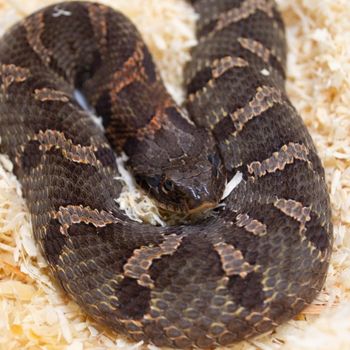 |
| 6 | Eastern Massasauga (Sistrurus catenatus) |
| 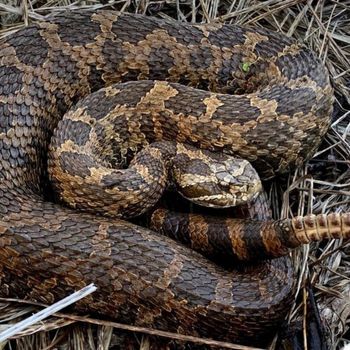 |
| 7 | Eastern Milksnake (Lampropeltis triangulum) |
|  |
| 8 | Eastern Ribbon Snake (Thamnophis sauritus sauritus) |
|  |
| 9 | Eastern Worm Snake (Carphophis amoenus amoenus) |
| 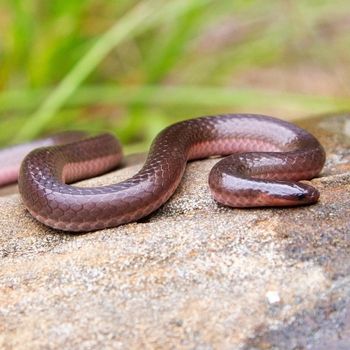 |
| 10 | Northern Copperhead (Agkistrodon contortrix mokasen) |
| 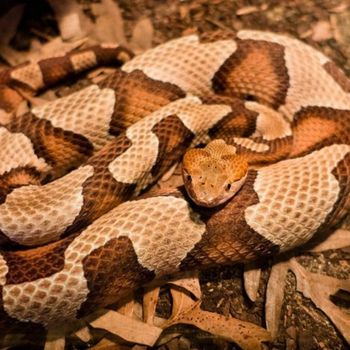 |
| 11 | Northern Water Snake (Nerodia sipedon) |
|  |
| 12 | Queen Snake (Regina septemvittata) |
| 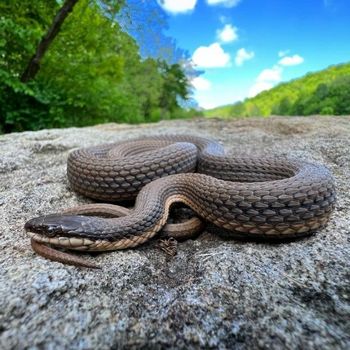 |
| 13 | Red-Bellied Snake (Storeria occipitomaculata) |
|  |
| 14 | Ringneck Snake (Diadophis punctatus) |
|  |
| 15 | Smooth Green Snake (Opheodrys vernalis) |
| 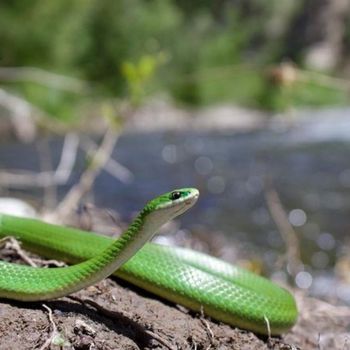 |
| 16 | Timber Rattlesnake (Crotalus horridus) |
|  |
| 17 | Western Hognose Snake (Heterodon nasicus) |
| 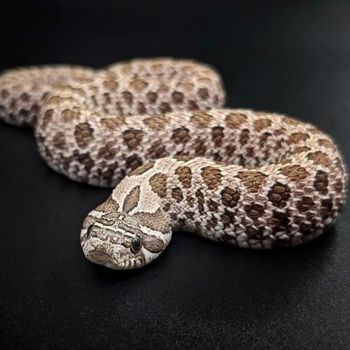 |
17 Snakes You Can Find in New York
In the state of New York, a fascinating array of serpents can be found slithering through its diverse landscapes. From venomous to harmless, each species has its unique story to tell. Below, we’ll explore the wonders of these often misunderstood creatures of New York, from their natural habitats and behaviors to the challenges they face in our changing world.
1. Black Racer
- Scientific Name: Coluber constrictor constrictor
- Common Name: Black racer
- Size: Up to 6 feet (1.8 meters)
- Natural Habitat: Various habitats, including forests, grasslands, and urban areas
- Color: Solid black with white chin
- Habitat: Various habitats, including forests, grasslands, and urban areas
- Maximum Size: Up to 6 feet (1.8 meters)
- Diet: Rodents, lizards, frogs, and insects
- Reproduction: Lay eggs in clutches of 12-30
- Venom: Non-venomous
- Conservation: Least concern
The Black Racer (Coluber constrictor constrictor) is a non-venomous snake species of New York reaching up to 6 feet (1.8 meters) in length, featuring a solid black coloration and a striking white chin. It thrives in an array of habitats, including forests, grasslands, and urban areas. As a diurnal and swift-moving snake, it feeds on rodents, lizards, frogs, and insects. They reproduce by laying eggs in clutches of 12-30, and are currently designated as a species of least concern in terms of conservation status.
2. Black Rat Snake
- Scientific Name: Pantherophis obsoletus
- Common Name: Black rat snake
- Size: Up to 8 feet (2.4 meters)
- Natural Habitat: Forests, grasslands, and urban areas
- Color: Black with faint dark blotches
- Habitat: Forests, grasslands, and urban areas
- Maximum Size: Up to 8 feet (2.4 meters)
- Diet: Rodents, birds, and eggs
- Reproduction: Lay eggs in clutches of 5-30
- Venom: Non-venomous
- Conservation: Least concern
Pantherophis obsoletus, commonly known as Black Rat Snake, can grow up to 8 feet (2.4 meters) long, with a black and dark-blotched coloring. These non-venomous reptiles inhabit forests, grasslands, and urban areas of New York, showcasing diurnal and semi-arboreal behavior. Their diet consists of rodents, birds, and eggs. Female Black Rat Snakes lay eggs in clutches of 5-30 during the reproduction season. Although not endangered, these snakes play an important role in controlling rodent populations.
3. Common Garter Snake
- Scientific Name: Thamnophis sirtalis
- Common Name: Common garter snake
- Size: Up to 3-4 feet (0.9-1.2 meters)
- Natural Habitat: Wet and moist habitats, including marshes, fields, and forests
- Color: Green or brown with three yellow stripes
- Habitat: Wet and moist habitats, including marshes, fields, and forests
- Maximum Size: Up to 3-4 feet (0.9-1.2 meters)
- Diet: Frogs, fish, earthworms, and small mammals
- Reproduction: Gives birth to live young, 10-40 per litter
- Venom: Mildly venomous, harmless to humans
- Conservation: Least concern
The Common Garter Snake (Thamnophis sirtalis) is a 3-4 feet (0.9-1.2 meters) non-aggressive and mildly venomous reptile with a green or brown body and three yellow stripes. Inhabiting wet and moist habitats like marshes, fields, and forests of New York, these diurnal snakes hibernate during winter to escape the cold. Their diet consists of frogs, fish, earthworms, and small mammals. Uniquely, these snakes birth live young, producing 10-40 per litter. Although venomous, they pose no threat to humans and are currently listed as a species of least concern for conservation.
4. Dekay’s Brownsnake
- Scientific Name: Storeria dekayi
- Common Name: Dekay’s brown snake
- Size: 9-15 inches (23-38 cm)
- Natural Habitat: Forests, grasslands, wetlands, and urban areas
- Color: Brown or gray with dark spots
- Habitat: Forests, grasslands, wetlands, and urban areas
- Maximum Size: 9-15 inches (23-38 cm)
- Diet: Earthworms, slugs, and other soft-bodied invertebrates
- Reproduction: Give birth to live young (ovoviviparous), 3-40 offspring
- Venom: Non-venomous
- Conservation: Least concern
Storeria dekayi, commonly known as Dekay’s Brown Snake, is a small, non-venomous reptile, measuring 9-15 inches (23-38 cm) in length. Its brown or gray body features dark spots, and it inhabits forests, grasslands, wetlands, and urban areas. Exhibiting terrestrial, nocturnal, and secretive behavior, its diet consists primarily of earthworms, slugs, and other soft-bodied invertebrates. A fascinating ovoviviparous species, Dekayís Brown Snake gives birth to live young, bearing 3-40 offspring. Its current conservation status is classified as least concern.
5. Eastern Hog-nosed Snake
- Scientific Name: Heterodon platirhinos
- Common Name: Eastern hog-nosed snake
- Size: 20-33 inches (51-84 cm)
- Natural Habitat: Woodlands, grasslands, and sandy areas
- Color: Highly variable, typically brown or gray with dark blotches
- Habitat: Woodlands, grasslands, and sandy areas
- Maximum Size: 20-33 inches (51-84 cm)
- Diet: Mostly toads, but also other amphibians and small mammals
- Reproduction: Lay eggs, 4-60 per clutch
- Venom: Mild venom, harmless to humans
- Conservation: Least concern
The Eastern Hog-nosed Snake (Heterodon platirhinos) is a moderately-sized serpent, reaching lengths of 20-33 inches (51-84 cm). Its coloration is highly variable, typically exhibiting brown or gray hues with dark blotches. Inhabiting woodlands, grasslands, and sandy areas, this diurnal snake is known for playing dead when threatened. Its diet mainly consists of toads, along with other amphibians and small mammals. It reproduces by laying 4-60 eggs per clutch, has mild venom harmless to humans, and is classified as of “Least Concern” in conservation efforts.
6. Eastern Massasauga
- Scientific Name: Sistrurus catenatus
- Common Name: Eastern massasauga
- Size: 18-30 inches (45-76 cm)
- Natural Habitat: Wetlands, grasslands, and forests
- Color: Gray or light brown with dark brown blotches
- Habitat: Wetlands, grasslands, and forests
- Maximum Size: 18-30 inches (45-76 cm)
- Diet: Small mammals, amphibians, and occasionally birds
- Reproduction: Give live birth to 5-20 young
- Venom: Venomous, but rarely fatal
- Conservation: Threatened
The Eastern Massasauga (Sistrurus catenatus), a gray or light brown rattlesnake with dark brown blotches, measures 18-30 inches (45-76 cm) in length. Found in wetlands, grasslands, and forests, it is solitary and adapts its behavior with temperatureódiurnal during cooler months and crepuscular or nocturnal in warmer months. Its diet consists of small mammals, amphibians, and sometimes birds. The snake reproduces by giving live birth to 5-20 offspring. While venomous, its bite is rarely fatal. It is currently considered a threatened species.
7. Eastern Milksnake
- Scientific Name: Lampropeltis triangulum
- Common Name: Eastern milksnake
- Size: Up to 3.9 feet (1.2 meters)
- Natural Habitat: Forests, grasslands, farmlands, and rocky areas
- Color: Reddish-brown with y-shaped black-edged white bands
- Habitat: Forests, grasslands, farmlands, and rocky areas
- Maximum Size: Up to 3.9 feet (1.2 meters)
- Diet: Rodents, small birds, and reptiles
- Reproduction: Lay eggs in clutches of 3-20
- Venom: Non-venomous
- Conservation: Least concern
The Eastern Milksnake (Lampropeltis triangulum) is a non-venomous snake that grows up to 3.9 feet (1.2 meters) in length. It features a reddish-brown color adorned with Y-shaped black-edged white bands. Commonly found in forests, grasslands, farmlands, and rocky areas of New York, this nocturnal and terrestrial snake primarily consumes rodents, small birds, and reptiles. Eastern Milksnakes reproduce by laying egg clutches of 3-20. Currently, their conservation status is listed as least concern.
8. Eastern Ribbon Snake
- Scientific Name: Thamnophis sauritus sauritus
- Common Name: Eastern ribbon snake
- Size: 18-34 inches (45-86 cm)
- Natural Habitat: Wetlands, swamps, and marshes near water
- Color: Black, greenish, or brown with three distinct light stripes
- Habitat: Wetlands, swamps, and marshes near water
- Maximum Size: 18-34 inches (45-86 cm)
- Diet: Frogs, toads, small fish, and insects
- Reproduction: Lay 3-27 eggs, sometimes communal with other snakes
- Venom: Non-venomous
- Conservation: Least concern
The Eastern Ribbon Snake, scientifically known as Thamnophis sauritus sauritus, is a non-venomous reptile measuring 18-34 inches (45-86 cm). It inhabits wetlands, swamps, and marshes near water and features a distinctive black, greenish, or brown color with three light stripes. Known for their daytime activity and skittish behavior, these snakes are excellent swimmers with a diet comprising frogs, toads, small fish, and insects. They reproduce by laying 3-27 eggs, sometimes communally with other snakes. Their conservation status is of least concern.
9. Eastern Worm Snake
- Scientific Name: Carphophis amoenus amoenus
- Common Name: Eastern worm snake
- Size: Up to 11-14 inches (28-35.5 centimeters)
- Natural Habitat: Forests, woodlands, and grasslands with moist soil
- Color: Pink-brown to gray-brown with a pinkish-yellow belly
- Habitat: Forests, woodlands, and grasslands with moist soil
- Maximum Size: Up to 11-14 inches (28-35.5 centimeters)
- Diet: Earthworms and other soft-bodied invertebrates
- Reproduction: Lay eggs in clutches of 2-8
- Venom: Non-venomous
- Conservation: Least concern
The Eastern Worm Snake (Carphophis amoenus amoenus) is a small, non-venomous species, reaching lengths of 11-14 inches (28-35.5 centimeters). It possesses a pink-brown to gray-brown coloration with a distinctive pinkish-yellow belly. This elusive, nocturnal burrower inhabits forests, woodlands, and grasslands with moist soil. Its diet primarily consists of earthworms and other soft-bodied invertebrates. The Eastern Worm Snake lays egg clutches of 2-8 eggs, and its conservation status is currently listed as “Least Concern.”
10. Northern Copperhead
- Scientific Name: Agkistrodon contortrix mokasen
- Common Name: Northern copperhead
- Size: 24 to 36 inches (61 to 91 centimeters), sometimes reaching 4 feet (1.2 meters)
- Natural Habitat: Deciduous forests, mixed woodlands, rocky areas, and near streams
- Color: Copper-colored with dark brown bands
- Habitat: Deciduous forests, mixed woodlands, rocky areas, and near streams
- Maximum Size: 24 to 36 inches (61 to 91 centimeters), sometimes reaching 4 feet (1.2 meters)
- Diet: Small mammals, birds, amphibians, and reptiles
- Reproduction: Give birth to live young, 4-14 offspring per litter
- Venom: Venomous, but usually not fatal to humans
- Conservation: Least concern
The Northern Copperhead (Agkistrodon contortrix mokasen) is a venomous snake found in deciduous forests, mixed woodlands, rocky areas, and near streams. It measures 24 to 36 inches (61 to 91 cm) in length, occasionally reaching 4 feet (1.2 meters). Copperheads are copper-colored and have dark brown bands on their bodies. These crepuscular ambush predators primarily prey on small mammals, birds, amphibians, and reptiles. They reproduce by giving birth to live young, with 4-14 offspring per litter. Though venomous, their bites are usually not fatal to humans. Their conservation status is currently classified as “least concern.”
11. Northern Water Snake
- Scientific Name: Nerodia sipedon
- Common Name: Northern water snake
- Size: Up to 4.5 feet (1.4 meters)
- Natural Habitat: Aquatic habitats, such as rivers, lakes, ponds, and marshes
- Color: Brown or gray with dark bands or blotches
- Habitat: Aquatic habitats, such as rivers, lakes, ponds, and marshes
- Maximum Size: Up to 4.5 feet (1.4 meters)
- Diet: Fish, amphibians, and invertebrates
- Reproduction: Lay eggs in clutches of 10-30
- Venom: Non-venomous
- Conservation: Least concern
The Northern Water Snake (Nerodia sipedon) is a non-venomous reptile that can grow up to 4.5 feet (1.4 meters) in length. It is characterized by its brown or gray color with dark bands or blotches. This nocturnal and semi-aquatic species can be found in a variety of aquatic habitats, including rivers, lakes, ponds, and marshes. Its diet consists of fish, amphibians, and invertebrates. Northern Water Snakes reproduce by laying eggs in clutches of 10-30, and currently have a conservation status of least concern.
12. Queen Snake
- Scientific Name: Regina septemvittata
- Common Name: Queen snake
- Size: Up to 3 feet (0.9 meters)
- Natural Habitat: Streams, creeks, and other aquatic environments
- Color: Olive, brown or gray with three stripes and cream or yellowish belly
- Habitat: Streams, creeks, and other aquatic environments
- Maximum Size: Up to 3 feet (0.9 meters)
- Diet: Crayfish and other small aquatic invertebrates
- Reproduction: Lay eggs in clutches of 4-14
- Venom: Non-venomous
- Conservation: Least concern
The Queen Snake (Regina septemvittata) is a non-venomous reptile growing up to 3 feet (0.9 meters) in length. Often sporting olive, brown, or gray coloration, this snake displays three distinctive stripes and a yellowish belly. It thrives in aquatic habitats such as streams and creeks, and is highly active during the day. Queen Snakes primarily feed on crayfish and other small aquatic invertebrates. They lay eggs in clutches of 4-14, and currently face no significant conservation threats.
13. Red-Bellied Snake
- Scientific Name: Storeria occipitomaculata
- Common Name: Red-bellied snake
- Size: 8-16 inches (20-41 cm)
- Natural Habitat: Forests, woodlands, and wetlands
- Color: Gray or brown with a red or orange belly
- Habitat: Forests, woodlands, and wetlands
- Maximum Size: 8-16 inches (20-41 cm)
- Diet: Slugs, snails, and earthworms
- Reproduction: Live-bearing; 4-21 offspring per litter
- Venom: Non-venomous
- Conservation: Least concern
The Red-Bellied Snake (Storeria occipitomaculata) is a small, non-venomous snake measuring 8-16 inches (20-41 cm) in length. They are gray or brown with a distinctive red or orange belly. Mostly found in forests, woodlands, and wetlands of New York, these nocturnal and secretive creatures primarily feed on slugs, snails, and earthworms. As live-bearing reptiles, they produce 4-21 offspring in each litter. With a conservation status of “Least Concern,” this terrestrial snake presents no significant threat to humans.
14. Ringneck Snake
- Scientific Name: Diadophis punctatus
- Common Name: Ringneck snake
- Size: 12-15 inches (30-38 centimeters)
- Natural Habitat: Forests, grasslands, and urban areas
- Color: Gray or dark brown with yellow or orange ring around the neck
- Habitat: Forests, grasslands, and urban areas
- Maximum Size: 12-15 inches (30-38 centimeters)
- Diet: Small invertebrates such as insects, worms, and slugs
- Reproduction: Lay eggs in clutches of 3-10
- Venom: Mildly venomous, but not harmful to humans
- Conservation: Least concern
The Ringneck Snake (Diadophis punctatus) is a small, mildly venomous serpent, measuring 12-15 inches (30-38 centimeters) in length. Exhibiting a gray or dark brown coloration with a distinct yellow or orange ring around its neck, this species prefers habitats including forests, grasslands, and urban areas. As nocturnal, secretive creatures, Ringneck Snakes are found hiding under rocks or logs, feeding on small invertebrates such as insects, worms, and slugs. Reproducing by laying 3-10 eggs per clutch, this snake is presently classified as least concern in terms of conservation status.
15. Smooth Green Snake
- Scientific Name: Opheodrys vernalis
- Common Name: Smooth green snake
- Size: 14-20 inches (36-51 cm)
- Natural Habitat: Grasslands, meadows, and open woodlands
- Color: Bright green with a lighter belly
- Habitat: Grasslands, meadows, and open woodlands
- Maximum Size: 14-20 inches (36-51 cm)
- Diet: Insects and spiders
- Reproduction: Lay eggs in clutches of 3-12
- Venom: Non-venomous
- Conservation: Least concern
The Smooth Green Snake (Opheodrys vernalis) measures 14-20 inches (36-51 cm) and is characterized by its vibrant green color and lighter belly. Commonly found in grasslands, meadows, and open woodlands, this diurnal and terrestrial reptile is an adept climber. Its diet mainly consists of insects and spiders. In terms of reproduction, they lay eggs in clutches of 3-12. Though non-venomous, these snakes should be admired from afar. Fortunately, their conservation status is currently listed as ‘Least Concern.’
16. Timber Rattlesnake
- Scientific Name: Crotalus horridus
- Common Name: Timber rattlesnake
- Size: Up to 6 feet (1.8 meters)
- Natural Habitat: Forests, mixed woodlands, and rocky hillsides
- Color: Yellow, brown, gray, or black with dark bands
- Habitat: Forests, mixed woodlands, and rocky hillsides
- Maximum Size: Up to 6 feet (1.8 meters)
- Diet: Rodents, birds, and small mammals
- Reproduction: Viviparous, giving birth to 4-14 live young
- Venom: Hemotoxic venom
- Conservation: Least concern
The Timber Rattlesnake, scientifically known as Crotalus horridus, is a solitary, ambush predator that can grow up to 6 feet (1.8 meters) in length. It comes in various colors, including yellow, brown, gray, or black with dark bands, and inhabits forests, mixed woodlands, and rocky hillsides. Its diet consists of rodents, birds, and small mammals. Unlike most snakes, the Timber Rattlesnake is viviparous, giving birth to 4-14 live young. It possesses hemotoxic venom, and its conservation status is currently listed as least concern.
17. Western Hognose Snake
- Scientific Name: Heterodon nasicus
- Common Name: Western hognose snake
- Size: Up to 2.5 feet (0.76 meters)
- Natural Habitat: Grasslands, prairies, and semi-arid environments
- Color: Brown or tan with dark blotches
- Habitat: Grasslands, prairies, and semi-arid environments
- Maximum Size: Up to 2.5 feet (0.76 meters)
- Diet: Amphibians, particularly toads, as well as small mammals, reptiles, and birds
- Reproduction: Lay eggs in clutches of 4-23
- Venom: Mildly venomous, rear-fanged, and not considered dangerous to humans
- Conservation: Least concern
The Western Hognose Snake (Heterodon nasicus) is a mildly venomous reptile that can grow up to 2.5 feet (0.76 meters) in size. It has a distinct brown or tan color with dark blotches and is known for its characteristic “hognose.” These terrestrial snakes primarily inhabit grasslands, prairies, and semi-arid environments. Being diurnal creatures, their diet consists of amphibians, particularly toads, small mammals, reptiles, and birds. They reproduce by laying eggs in clutches of 4-23 and, despite the venom, are not considered dangerous to humans. Their conservation status is of least concern.
Nearby States:
Final Words
All the 17 snakes have truly opened our eyes to the fascinating world of snakes found in New York. Who knew there were so many different types of these slithering reptiles, each with their own unique characteristics and habitats?
Not only did we get a chance to learn about some of the more common and well-known species, but we also delved into the lesser-known and often misunderstood ones.
So, the next time you’re out and about in New York, keep an eye out for these incredible creatures, and let’s continue to appreciate and protect the diverse wildlife that makes our world so interesting!
Are Snakes Common in Both New York and Virginia, and What Similar Species Might Be Found in These States?
Both New York and Virginia are home to several species of snakes, including the Eastern Garter Snake and Eastern Rat Snake. However, snakes native to virginia are more diverse due to the state’s warmer climate, with species like the Eastern Kingsnake being commonly found in forested areas and wetlands.
What Types of Snakes Can Be Found in New York and Washington?
In New York and Washington, various types of snakes can be found, including the evergreen serpent waves. Some common species in these regions include the garter snake, northern water snake, and eastern hognose snake. It’s important to learn to identify these snakes to ensure safety when exploring the outdoors.

